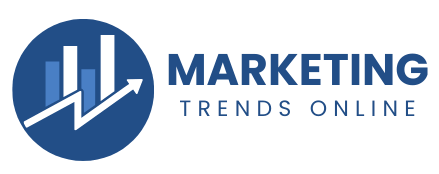Table of Contents
- Introduction
- Understanding Hyper-Personalization
- 1. Product Recommendations Based on Browsing History
- 2. Birthday and Anniversary Campaigns
- 3. Personalized Re-Engagement Emails
- 4. Dynamic Content Emails
- 5. Location-Based Campaigns
- 6. User-Generated Content Integration
- 7. Behavioral Trigger Emails
- Conclusion
- FAQs
Introduction
In the rapidly evolving digital landscape, engaging your audience can feel like navigating a maze. But with hyper-personalization, you can cut through the noise and connect with your customers on a deeper level. Hyper-personalized email campaigns take standard marketing tactics and elevate them by tailoring content to individual preferences, behaviors, and demographics. This blog post dives into the top seven hyper-personalized email campaigns that can significantly boost your engagement rates.
Understanding Hyper-Personalization
Hyper-personalization goes beyond using a person’s name in the email subject line. It leverages data and advanced analytics to deliver content that resonates with the recipient’s interests, habits, and needs. This approach can lead to:
- Higher open rates
- Increased click-through rates (CTR)
- Improved conversion rates
- Enhanced customer loyalty
According to a report by Epsilon, 80% of consumers are more likely to make a purchase when brands offer personalized experiences. Therefore, investing time and resources into hyper-personalized email campaigns can yield significant returns.
1. Product Recommendations Based on Browsing History
One of the most effective ways to engage customers is by sending them tailored product recommendations based on their previous browsing history.
Example:
Amazon uses this strategy effectively by reminding users of items they viewed but didn’t purchase, along with suggestions for similar products.
Implementation Tips:
- Use analytics tools to track user behavior.
- Create segments based on browsing activity.
- Send emails with personalized recommendations and relevant promotions.
2. Birthday and Anniversary Campaigns
Celebrating your customers’ special days can create a lasting impression. Sending a birthday or anniversary email with a special offer can make them feel valued.
Example:
- Sephora sends out birthday emails that include exclusive discounts, making customers feel appreciated and increasing the likelihood of a purchase.
Implementation Tips:
- Collect birth dates during sign-up or through surveys.
- Personalize the message and include a special offer or discount.
- Use visually appealing designs to enhance engagement.
3. Personalized Re-Engagement Emails
Re-engaging customers who have become inactive is crucial for maintaining a healthy email list. Personalized re-engagement emails can help revive interest.
Example:
- Spotify sends personalized emails suggesting playlists or artists based on listening history, enticing users to return.
Implementation Tips:
- Identify inactive users using engagement metrics.
- Craft emails that acknowledge their absence and provide compelling reasons to come back.
- Include a clear call-to-action.
4. Dynamic Content Emails
Dynamic content allows you to tailor email content based on individual recipient data, creating a unique experience for each user.
Example:
- Netflix utilizes dynamic content to display personalized recommendations in their emails based on viewing history.
Implementation Tips:
- Use email marketing platforms that support dynamic content.
- Create rules for displaying different content segments.
- Monitor performance and adjust content based on engagement data.
5. Location-Based Campaigns
Leveraging customer location can significantly enhance relevance. Sending location-based emails can drive foot traffic to physical stores or promote local events.
Example:
- Starbucks sends emails to customers with promotions for nearby locations, driving in-store visits.
Implementation Tips:
- Collect location data during sign-up or through app usage.
- Customize emails based on local events, weather, or promotions.
- Use maps and local imagery for a personal touch.
6. User-Generated Content Integration
Incorporating user-generated content (UGC) into your email campaigns can foster community and increase trust.
Example:
- GoPro showcases photos and videos from their customers in promotional emails, encouraging community participation.
Implementation Tips:
- Encourage customers to share their experiences through social media.
- Feature UGC in your emails to create an authentic connection.
- Create a branded hashtag to streamline content collection.
7. Behavioral Trigger Emails
Behavioral trigger emails are sent automatically based on user actions, such as making a purchase, signing up, or abandoning a cart. These emails are timely and relevant, leading to higher engagement rates.
Example:
- Etsy sends cart abandonment emails reminding users of items they left behind, often with a gentle nudge or discount.
Implementation Tips:
- Set up automation workflows based on specific user actions.
- Personalize content based on the action taken.
- Test different subject lines and content to optimize engagement.
Conclusion
Hyper-personalized email campaigns can transform your marketing strategy and significantly boost engagement. By understanding your audience and utilizing the tactics outlined above, you can create meaningful connections with your customers. As you implement these strategies, remember to monitor performance and continually refine your approach for the best results.
FAQs
Q: What is hyper-personalization in email marketing?
A: Hyper-personalization refers to the use of advanced data analytics to deliver tailored content to individual recipients based on their preferences, behaviors, and demographics.
Q: How can I collect data for hyper-personalization?
A: Data can be collected through sign-up forms, surveys, website tracking, social media interactions, and purchase history.
Q: What tools can help with hyper-personalized email campaigns?
A: Popular tools include Mailchimp, HubSpot, and ActiveCampaign, which offer data analytics, segmentation, and automation features.
Q: What are the benefits of hyper-personalized email campaigns?
A: Benefits include higher open rates, increased CTR, improved conversion rates, and enhanced customer loyalty.
By implementing these strategies, you can create engaging email campaigns that resonate with your audience and drive better results. Happy emailing!


